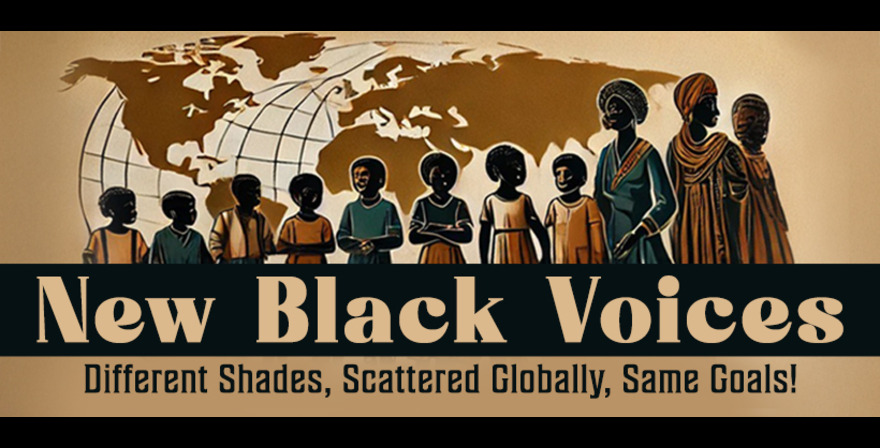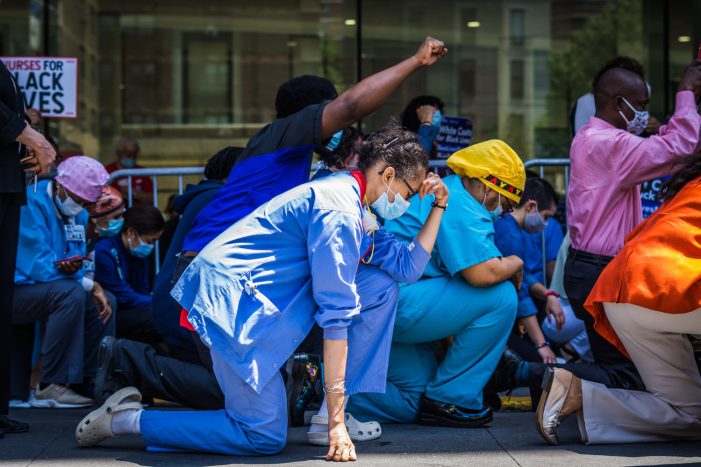By Linda Nwoke | Editorial Credit: Steve Sanchez / Shutterstock.com
As part of the healthcare reform, the United States government expanded the Medicaid program, providing healthcare access for millions of low-income Americans with limited or no coverage.
However, a notable shift described as a ‘great unwinding’ is unfolding within the program, evidenced in the gradual reduction in the number of people covered by Medicaid, which caters to the health needs of over 83 million people. This shift has resulted in over 23 million people, including 3 million children, losing or potentially losing coverage due to the end of pandemic-era continuous coverage protections.
According to research findings, there are challenges with the system. Sunita Sohrabji, the Health Editor of Ethnic Media Services, during an introduction in a briefing, noted that “69% of Americans were disenrolled because of paperwork and procedural technicalities,” and the challenge is more pronounced in ten southern states in the United States. These states need Medicaid expansion, yet they have refused to expand their programs under the Affordable Care Act, despite having the worst health equity inequities in the nation.”
Medicaid’s History and Federal-State Partnership
Katherine Hempstead, a senior policy adviser at the Robert Wood Johnson Foundation, shared the program’s history. She noted that Medicaid commenced in the same year as Medicare – 1965. Unlike Medicare, which the federal government entirely funds, Medicaid was established as a federal-state partnership. Thus, the partnership structure means that both federal and state governments contribute financially, with the federal government typically providing more funds in poorer states. “When we talk about Medicaid, we’re, in a way, talking about one big program. But at the same time, we’re talking about 50 different programs because each state has its own Medicaid agency,” says Hempstead
The Complexity of Medicaid Administration
Yet, the already complex program is further complicated because it operates differently in each state, sometimes even at the county level, she explained, especially during enrollment and eligibility redetermination. Most states contract their Medicaid programs to manage care organizations (MCOs) or insurance companies, making the face of Medicaid differ significantly across the country. Hempstead notes, “It’s tough to grasp because it looks different in different states… It’s a little bit of a complicated part of coverage to wrap your arms around if you’re new to it,” she says.
Medicaid’s Reach and Scale
Despite the fragmented administration, Medicaid remains the single and primary source of health insurance in the United States, with many enrollees being children. It also serves other categories, including pregnant women, low-income adults, low-income seniors, and individuals with various disabilities. “Close to a quarter of the population is enrolled in Medicaid. So, it’s an extensive program,” says Hempstead
Critical Facts about Medicaid
Medicaid is the primary payer for long-term services and support for low-income seniors, filling a gap that Medicare generally does not cover. It also provides essential coverage for individuals with disabilities, including children and adults with special healthcare needs, showing its importance in the healthcare system.
Under the Affordable Care Act (ACA), a landmark healthcare reform passed in 2010, an expansion category was introduced for low-income adults aged 18 to 65 with incomes below the federal poverty level (FPL). However, the 2012 Supreme Court ruling made this expansion optional for states, thereby affecting Medicaid’s reach.
The program expanded to include the elderly, individuals with disabilities, children, and pregnant women. To be eligible, enrollees are expected to have state residency and be U.S. citizens or qualified immigrants, with a five-year waiting period for many qualified immigrants, among other criteria.
Medicaid Coverage Gap and Non-Expansion States
However, the decision of some states, primarily in the South, not to expand Medicaid under the ACA has created a significant coverage gap, affecting approximately 2 to 3 million people. Most of these individuals, predominantly people of color, fall into the category of those earning too little to qualify for ACA marketplace subsidies and not meeting the eligibility for Medicaid in their state, thereby creating a massive problem for vulnerable populations. Notably, coverage varies by state, with some focusing on children, others on adults, and a few, like Illinois, covering seniors.
Despite the lack of Medicaid expansion in states with large populations like Texas and Florida, other states use their funds to extend Medicaid coverage to immigrants, regardless of their immigration status. This initiative, exemplified by New York, is a commendable effort to ensure healthcare access for all, irrespective of their background, in contrast to the states that are still lagging and need to be encouraged to adopt such measures.
New York’s Response to Medicaid Expansion and Support for Vulnerable Populations
New York has taken a proactive stance in addressing the challenges faced by vulnerable populations through its Medicaid program. It has prioritized the expansion and enhancement of services.
New York has chosen to emphasize the importance of Medicaid in providing essential coverage for individuals with disabilities, ensuring that both children and adults with special healthcare needs have access to the care they require. This commitment is deeply personal for many, as evidenced by one advocate who shared, “I have an adult son with a disability that has been in the Medicaid program and will be for the rest of his life.”
However, the state also faces unique challenges.
New York’s Response to Medicaid Funding Challenges: Protecting Safety-Net Hospitals
Responding to the ongoing challenges faced by safety-net hospitals, it has taken significant steps to prevent potential Medicaid cuts that could adversely affect the state’s most vulnerable populations. In recognition of these hospitals’ crucial role, especially in underserved communities, New York’s leaders have introduced bipartisan legislation to safeguard their funding.
Bipartisan Effort to Protect Medicaid Funding
Congresswoman Yvette D. Clarke (D-NY) and Representative Nick LaLota (R-NY) lead the Save Our Safety-Net Hospitals Act, a bipartisan initiative to prevent substantial cuts to Medicaid payments for New York hospitals. If implemented, these cuts would jeopardize the operations of safety-net hospitals, which are essential to the health and well-being of low-income residents.
Congresswoman Clarke emphasized the importance of these hospitals, stating, “New York’s safety-net hospitals are an invaluable resource for our state’s most vulnerable patients, and Medicaid DSH funding is necessary for keeping their operations running.” She added, “We cannot stand by as devastating funding cuts loom and threaten the health, well-being, and futures of the millions of New Yorkers who rely on these vital hospitals to access the healthcare services they need.”
Impact of Potential Cuts
According to the representatives, safety-net hospitals like Stony Brook University Hospital risk losing significant funding due to the current Medicaid Disproportionate Share Hospital (DSH) cap calculation. This would result in a $53 million reduction in revenue for Stony Brook alone and ongoing financial harm to other hospitals across the state. Representative LaLota highlighted the critical nature of these institutions, noting that the proposed legislation is a “bipartisan and common-sense fix” that would prevent the cuts without burdening taxpayers.
Broader Support and Implications
So far, the legislation has garnered widespread support from healthcare leaders and associations, including New York’s Healthcare and the Greater New York Hospital Association.
These organizations stress that the Save Our Safety-Net Hospitals Act is vital to ensuring that hospitals can continue to serve low-income seniors, disabled individuals, and other vulnerable groups who rely heavily on Medicaid.
The President of the Greater New York Hospital Association, Kenneth E. Raske, remarked, “Medicaid DSH payments are an essential lifeline for New York’s safety-net hospitals, but the current DSH cap calculation will severely harm them financially and disrupt access to care. The Save Our Safety Net Hospitals Act will help ensure that safety-net hospitals can continue to serve the most vulnerable patients and communities.”
New York’s Leadership in Healthcare Equity
Through this legislation and ongoing Medicaid expansion efforts, New York continues to lead in ensuring that its healthcare system remains accessible and equitable. New York addresses the healthcare disparities that affect its most vulnerable residents by protecting funding for safety-net hospitals and expanding coverage to low-income individuals and immigrants.
The state remains committed to preserving the integrity of its healthcare safety net, ensuring that no one is left behind. Through these initiatives, New York continues to set an example of how states can use Medicaid to address healthcare disparities and provide critical support to vulnerable populations.

